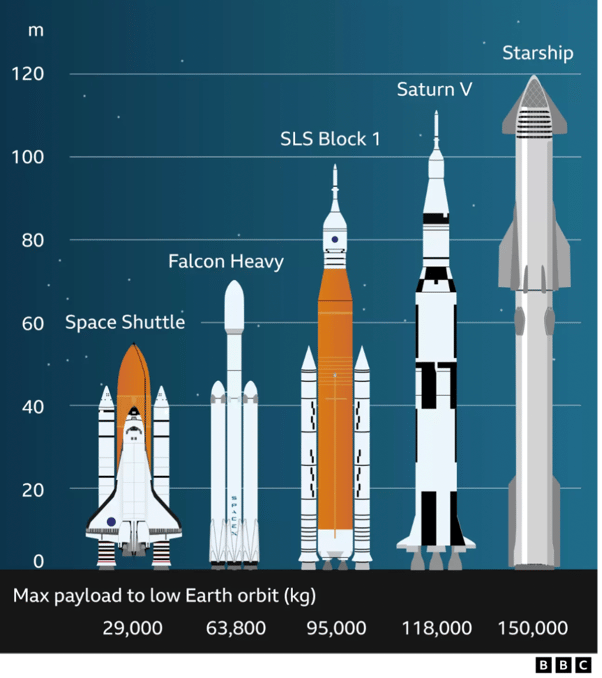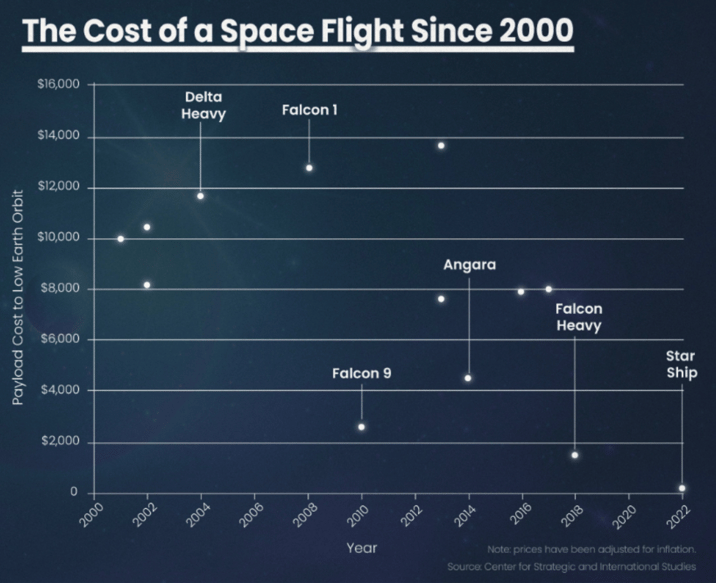Jack Colreavy
- Apr 26, 2023
- 4 min read
ABSI - SpaceX: The Launch of Starship
Every Tuesday afternoon we publish a collection of topics and give our expert opinion about the Equity Markets.

Last Thursday SpaceX made history again with the first fully integrated launch of “Starship” sitting atop the full-stack “Super Heavy” booster rocket. Starship is the next-gen fully reusable rocket system that may one day ferry passengers to the Moon and Mars. ABSI this week celebrates the success of the launch and dives into why this vehicle is a game-changer for humanity.
The launch of Starship made international headlines across the world last week but unfortunately many media outlets chose to focus on the outcome that resulted in what SpaceX has termed RUP (rapid unscheduled disassembly). In other words the rocket exploded and didn’t reach orbit, which to the lay observer meant a complete failure. This assumption was bolstered by a swath of unsophisticated media reports. The Daily Mail topped the cake with the headline “Shocking Images Show Elon Musk’s Doomed Starship Rocket Spray Debris Over Texas Coast”.
However, the mission was deemed a huge success from SpaceX. While the ultimate goal was for the whole system to work as designed, this rarely happens on any first attempt; after all, it is rocket science. Instead the barrier of success was the liftoff of Super Heavy from the space pad which did not allow the ~3,400 metric tons of propellant to explode and destroy the whole space port. This was achieved as the test launch went onto more milestones in its ~4 minute, ~38km journey into the atmosphere. The most notable milestone was achieving max Q - the point during a rocket or spacecraft's ascent when it experiences the highest aerodynamic stress or pressure on its structure, representing the moment when the vehicle is most vulnerable to structural failure. Achieving Max Q provides SpaceX engineers with valuable data that will influence future iterations of the design of the rocket.

Source: BBC
It is difficult to understate the importance of the Starship system not just for space exploration, but for many other aspects of human civilisation. The 120m tall Starship system is the largest rocket ever developed and has the capacity to transport up to 150 metric tons of payload to low Earth orbit (LEO). Despite SpaceX already revolutionising the cost of launch with the Falcon 9 and Falcon Heavy, taking the cost per kg from ~US$10,000 to ~US$2,000, Starship will take another quantum leap lower to ~US$200 per kg.
While the immediate use for Starship will be to ferry astronauts and space tourists to the moon, given the payload prices, it also opens the doors to disrupting other industries. For example, Starlink, owned by SpaceX, is a constellation of satellites that provide internet access globally. As of Feb, SpaceX has launched 3,580 Starlink satellites to LEO enabling internet access in 53 countries. The initial plan is for 12,000 satellites which will enable global internet and mobile phone coverage. Doing some back-of-the-envelope calculations, currently 60 Starlink satellites are launched per Falcon 9 rocket at an estimated cost of US$31.2m per launch - each satellite weighs 260kg (V1.0) and the cost per kg is ~US$2,000/kg. Therefore, 12k satellites would cost over US$6.2 billion just to launch to LEO. Starship could reduce this cost 10x to ~US$620m and enable faster deployment given it could carry ~300 satellites requiring ~40 launches instead of 200 Falcon 9 launches.
Source: Visual Capitalist
The disruption isn’t just global telecommunications. Another critical industry identified to be disrupted by Starship is global transportation. Management at SpaceX envision a not-too-distant future where Starship can be used as rapid Earth transport. Initially this will be for cargo, replacing the US$140 billion plus air cargo industry but could eventually move to human Earth transportation. It is estimated that London to Sydney could be completed in under an hour with sub-orbital flight.
Despite what headlines may say about the maiden Starship launch, the future is bright for SpaceX and its Starship system. The potential of the system is breathtaking, however, it is important to note that there is a long and arduous road ahead in the development of the rocket and its subsequent infrastructure. Despite SpaceX repeatedly demonstrating the speed at which it is able to iterate rocket design, it will likely miss its initial target of launching its first passengers in 2023. This gives me plenty of time to save for a ticket.
We offer value-rich content to our BPC community of subscribers. If you're interested in the stock market, you will enjoy our exclusive mailing lists focused on all aspects of the market.
To receive our exclusive E-Newsletter, subscribe to 'As Barclay Sees It' now.
Share Link







